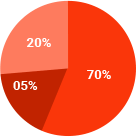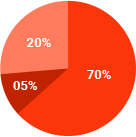
Investment Planning
What is Pay Per Click (PPC) Advertising?
Pay Per Click (PPC) advertising is a form of digital marketing where advertisers pay each time a user clicks on their ad. In Google Ads, PPC is also known as Cost-per-Click (CPC) bidding. Advertisers set a maximum cost-per-click bid, and Google’s algorithm determines the ad’s position and cost based on factors like relevance, ad quality, and bid amount.
- Socially Responsible Investment
- Comprehensive Investment Plans
- Financial Planning for Business
- Tax Mitigation Strategies



How Does PPC Work?
- Keyword Research: Identify relevant keywords and phrases for your business using tools like Google Keyword Planner.
- Ad Creation: Create ads with compelling headlines, descriptions, and landing pages.
- Bidding: Set a maximum cost-per-click bid for each keyword or ad group.
- Ad Auction: Google’s algorithm runs an auction for each search query, considering factors like bid amount, ad relevance, and landing page quality.
- Ad Display: The highest bidder wins the top ad spot, and the ad is displayed to the user.
- Cost and Conversion Tracking: Track costs, conversions, and return on investment (ROI) to optimize campaigns.
- Socially Responsible Investment
- Comprehensive Investment Plans
- Financial Planning for Business
- Tax Mitigation Strategies

The financial flow of Google Ads pay per click (CPC) involves the following entities and processes:
- Advertisers: Businesses or individuals who create and manage ads on Google Ads platform.
- Publishers: Website owners or content creators who display ads on their websites or platforms.
- Google Ads: The advertising platform owned by Google that connects advertisers with publishers.
- Cost-per-Click (CPC): The amount an advertiser pays each time a user clicks on their ad.
Here’s a simplified financial flow:
- Advertiser sets up an ad campaign: Advertisers create an ad campaign on Google Ads, specifying their target audience, budget, and bidding strategy.
- Ad auction: When a user searches for a keyword or interacts with an ad, Google’s ad auction algorithm determines which ads to display and in what order.
- Ad display: The winning ad is displayed to the user, and the user clicks on it.
- Cost-per-Click (CPC): The advertiser is charged the CPC, which is determined by the ad auction and the advertiser’s bidding strategy.
- Publisher earns revenue: The publisher earns revenue from the ad display and click, based on the CPC and the number of clicks.
- Google Ads takes a commission: Google Ads takes a commission on the revenue earned by the publisher, typically ranging from 32% to 45%.
- Advertiser pays Google Ads: The advertiser pays Google Ads the CPC, which is deducted from their ad campaign budget.
- Advertiser tracks performance: The advertiser tracks the performance of their ad campaign, including the CPC, conversion rates, and return on ad spend (ROAS).
Google Ads is a popular pay-per-click (PPC) advertising platform that allows businesses to reach their target audience and drive conversions. The cost of Google Ads can vary depending on several factors, including the industry, competition, and ad quality.
Cost Per Click
According to the search results, the cost per click (CPC) for Google Ads can range from $0.11 to $0.50, with 61% of businesses paying between these amounts. This means that the cost per click can vary widely depending on the specific keywords and ad groups being targeted.
Cost Per 1000 Impressions
In addition to CPC, Google Ads also offers cost per 1000 impressions (CPM) bidding. This allows businesses to pay for every 1000 times their ad is displayed, rather than every click. The cost per 1000 impressions can vary depending on the industry and ad placement.
Google Ads Pricing Guide
Here is a summary of the Google Ads pricing guide:
- CPC: $0.11 - $0.50 (61% of businesses pay between these amounts)
- CPM: varies depending on industry and ad placement
Benefits of Google Ads
Google Ads offers several benefits for businesses, including:
- Targeted advertising: Google Ads allows businesses to target specific keywords and demographics to reach their target audience.
- Measurable results: Google Ads provides detailed reporting and analytics to help businesses track the effectiveness of their ads.
- Flexibility: Google Ads offers a range of bidding options, including manual and automated bidding, to help businesses manage their budget and optimize their campaigns.
- Scalability: Google Ads allows businesses to scale their campaigns up or down depending on their needs and budget.
Case Study
According to the search results, one company saw a 182% increase in trial sign-ups and a 258% increase in clicks after using Google Ads. They also saw a 40% growth in conversions and a 40% growth in revenue.
Google Ads is a popular pay-per-click (PPC) advertising platform where advertisers pay each time a user clicks on their ads. The cost-per-click (CPC) is the amount an advertiser pays for each click on their ad. Here’s a breakdown of Google Ads CPC and its investment:
How CPC Bidding Works
In Google Ads, you set a maximum cost-per-click (max. CPC) bid, which is the highest amount you’re willing to pay for a click on your ad. When a user searches for a keyword, Google Ads auctions off the top ad spots to the highest bidder. However, the winner isn’t always the highest bidder; Google also considers the ad’s relevance, expected click-through rate, and landing page experience to determine the Ad Rank.
Factors Affecting CPC
Several factors influence the cost-per-click on Google Ads:
- Competition: The more competitive the industry or niche, the higher the CPC.
- Ad relevance: Ads with high relevance to the searched keyword tend to have lower CPC.
- Quality Score: A high Quality Score can lead to lower CPC.
- Target audience: The target audience’s demographics, interests, and behaviors can impact CPC.
- Ad format: Different ad formats, such as text, image, or video, can affect CPC.
Average CPC
The average CPC on Google Ads varies widely depending on the industry, niche, and target audience. According to Google Ads, the average CPC for the business services vertical (e.g., legal, accounting, real estate) can range from $5 to $10 or more.
Is $10 per click normal?
While $10 per click may seem high, it’s not uncommon for certain industries or niches. For example, in the business services vertical, a CPC of $10 can be a small price to pay for a new client that yields $1,000 to $10,000 in revenue.
Tips for Optimizing Google Ads CPC
To minimize your Google Ads CPC and maximize your return on investment (ROI):
- Set a competitive bid: Set a bid that’s competitive with other advertisers in your industry.
- Optimize ad relevance: Ensure your ads are highly relevant to the searched keyword.
- Improve Quality Score: Focus on improving your Quality Score by optimizing ad copy, landing pages, and targeting.
- Monitor and adjust: Continuously monitor your ad performance and adjust your bids and targeting as needed.

